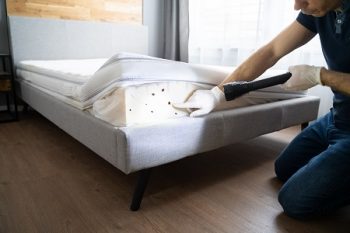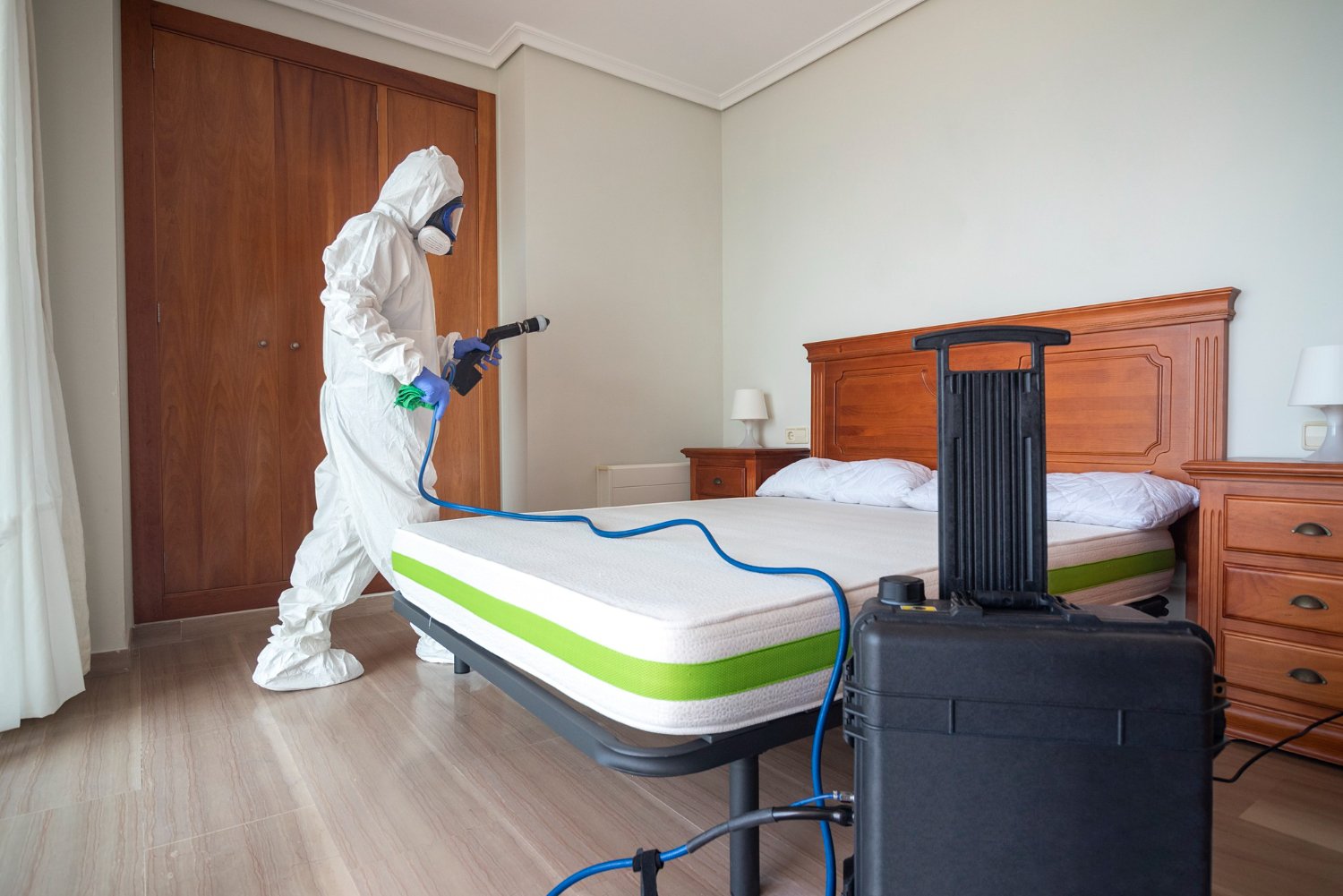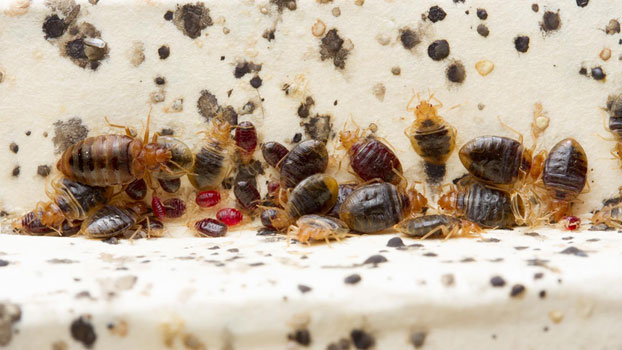Insect Control Services Demystified: The Scientific Research Behind Getting Rid Of Parasites and Pests
Behind the relatively routine task of getting rid of bugs lies an interesting globe of scientific principles and approaches that drive the process of insect administration. From recognizing the intricate habits patterns of pests to using sophisticated modern technologies for their eradication, the world of pest control runs on a foundation of knowledge that expands far beyond just getting rid of unwanted intruders.
Parasite Habits Evaluation
Analyzing bug actions is essential in developing efficient insect control approaches for both household and commercial setups. By recognizing the habits and patterns of pests, insect control specialists can implement targeted and effective solutions to eliminate invasions. One key aspect of bug habits analysis is identifying the details aspects that bring in insects to a specific location. This might consist of access to food sources, water, shelter, or beneficial environmental problems. Some bugs are drawn to areas with high wetness levels, while others are attracted to garbage or organic issue.
In addition, researching bug behavior assists in figuring out one of the most suitable methods of parasite control. Various parasites might need various approaches, such as baiting, chemical, or capturing treatments. For instance, recognizing that a specific kind of parasite is largely active during the night can help in organizing treatments for optimum efficiency. In general, a detailed evaluation of bug habits is essential for developing customized pest management plans that are both extremely effective and ecologically friendly.
Integrated Pest Administration Techniques
Integrated Bug Monitoring Methods include thorough methods that utilize a mix of safety nets, biological controls, and keeping an eye on to efficiently manage parasite populations. Safety nets aim to eliminate elements that attract bugs, such as food and water resources, by implementing correct hygiene methods. This includes sealing fractures and gaps, dealing with leakages, and storing food in closed containers. Biological controls entail presenting natural predators or bloodsuckers to manage pest populations, reducing the demand for chemical pesticides. Launching ladybugs to prey on aphids in a yard is a typical organic control method. Tracking plays a crucial duty in Integrated Pest Administration by routinely evaluating and identifying pest populations to establish the most proper control techniques. By utilizing a combination of these methods, pest control solutions can minimize the environmental influence of insect management while properly reducing pest populaces in a lasting fashion.
Eco-Friendly Parasite Control Solutions
With a focus on sustainability and ecological awareness, environmentally friendly insect control options provide a natural and reliable choice to conventional chemical pesticides. These methods prioritize the use of safe components stemmed from plants, minerals, or other natural sources to battle pest invasions without creating harm to the atmosphere, humans, or non-targeted types.
One preferred environment-friendly strategy is biological pest control, which involves presenting natural killers, bloodsuckers, or virus to manage insect find here populations. By using the power of nature's own checks and equilibriums, this technique can effectively control bugs without the demand for dangerous chemicals. Additionally, agricultural pesticides originated from plants like garlic, neem, and pyrethrum have actually shown pledge in warding off or killing parasites while continuing to be risk-free for beneficial bugs and animals.
Additionally, green bug control services commonly concentrate on safety nets such as sealing entrance factors, getting rid of food and water sources, and maintaining proper cleanliness to hinder bugs from infesting buildings. By incorporating these lasting techniques, parasite control services can successfully eliminate bugs while decreasing ecological effect.

Function of Technology in Parasite Elimination
Modern improvements in technology have actually revolutionized the field of bug elimination, boosting the efficiency and performance of bug control solutions. One of the essential technological devices in insect control is the usage of remote surveillance devices, such as sensing units and cameras, which assist in determining insect hotspots and monitoring bug movements.
Moreover, the development of environment-friendly chemicals and lures that are a lot here are the findings more targeted towards specific pests has actually been made feasible with technical developments. This targeted strategy minimizes the total usage of chemicals, minimizing environmental influence while properly managing pest populaces. Additionally, using drones for aerial studies and targeted pesticide application in hard-to-reach locations has structured insect control procedures.

Significance of Routine Pest Inspections
Normal parasite inspections are vital for maintaining a pest-free setting and preventing infestations from taking hold - philly bed bug treatment philadelphia. By carrying out normal inspections, property owners can discover insect issues early on, permitting swift and targeted treatments to get rid of the parasites before they spread out and replicate. These assessments give a possibility to recognize possible entry factors where parasites can infiltrate the facilities, making it possible for aggressive actions to seal these accessibility points and protect against future infestations
Additionally, routine parasite examinations can aid safeguard the wellness and security of owners by making certain that the environment continues to be free of disease-carrying parasites and allergens. Early discovery of pests like rodents, roaches, or bed pests can protect against health risks linked with their presence, such as allergies, contamination of food and water resources, or the transmission of conditions.
Along with safeguarding human health and wellness, regular parasite evaluations are necessary for preserving the structural stability of structures. Particular parasites, such as termites, can cause substantial damage to wood frameworks if left untreated. Via regular evaluations, homeowner can identify termite problems early and apply procedures to protect against expensive architectural repairs.
Final Thought

Examining pest behavior is essential in creating reliable pest control strategies for both commercial and domestic setups.Integrated Insect Administration Methods include thorough methods that make use of a combination of preventative steps, biological controls, and monitoring to efficiently handle insect populaces. By visite site using a combination of these strategies, bug control solutions can minimize the environmental impact of insect management while properly lowering pest populaces in a lasting manner.
One of the crucial technological devices in pest control is the use of remote monitoring gadgets, such as cameras and sensors, which aid in determining parasite hotspots and monitoring insect activities (philly exterminator philadelphia pa bed bugs).In final thought, recognizing insect behavior, applying integrated insect administration techniques, using green services, including innovation, and performing routine examinations are essential elements in properly removing parasites